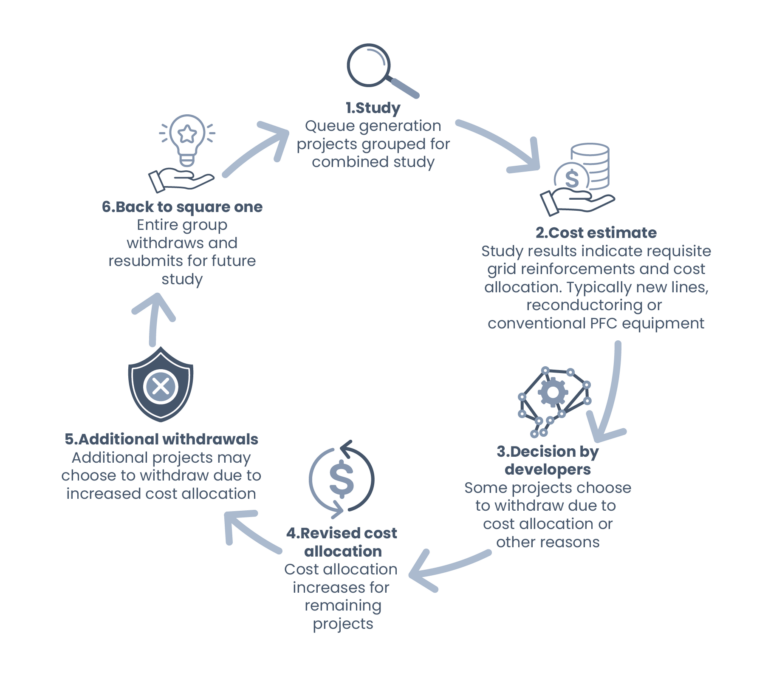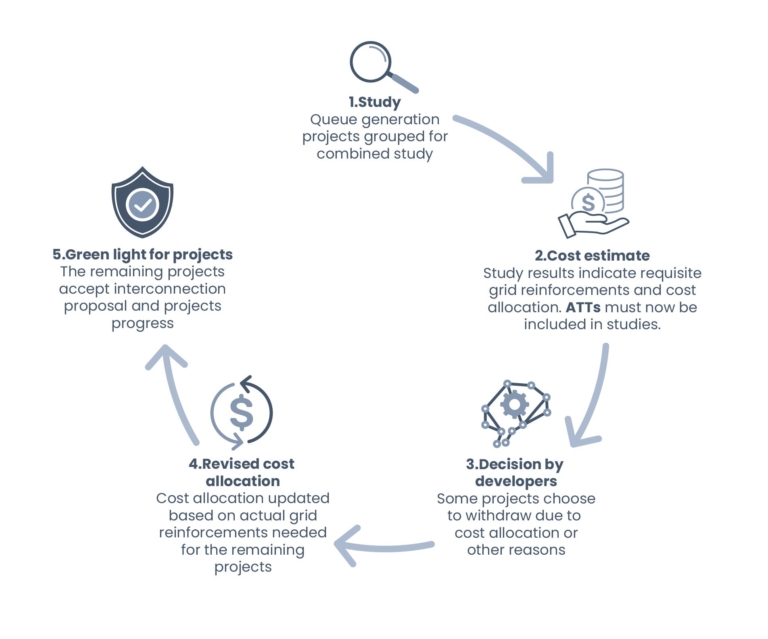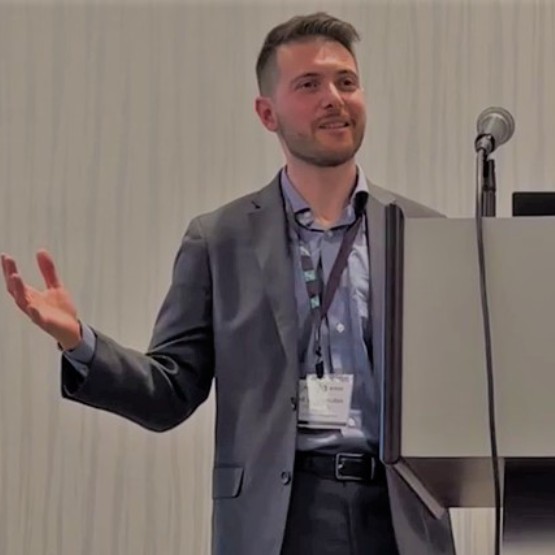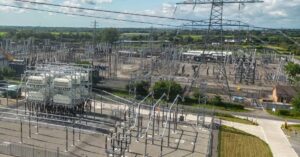

What is Order 2023 and how can it shorten the queue?
March 13, 2024
FERC’s Order 2023 aims to streamline the interconnection process in the US, including by requiring the inclusion of eight alternative transmission technologies (ATT) in interconnection studies. In this article, Ted Bloch-Rubin explains how flexible ATTs can help shorten the interconnection queue by providing faster, cost-effective, and future-proofed solutions.

Over the past number of years, the mounting concerns surrounding the long interconnection queue have dominated headlines across the US. Alongside grid congestion, permitting issues, and extensive delays to grid projects, one of the main barriers to faster interconnections is the traditional approach to interconnection studies that is taken by many states.
FERC’s new Order 2023 aims to streamline the interconnection process, providing a new approach that will address queue backlogs, improve certainty, and prevent undue discrimination for newer technologies. But what exactly does it entail, and how will it reduce the queue in practice?
First of all, Order 2023 mandates a range of improvements to the current interconnection processes, including a move towards first-ready, first-served cluster studies, opportunities to co-locate generation and/or storage, requirements to evaluate alternative transmission technologies (ATTs) in the studies, more transparency and standardization of the process, and increased financial and other commitments for project developers. Transmission providers who fall under this new mandate are due to submit a filing on how they will comply by 3 April 2024.
It’s not possible to cover all of these in one article, so I’m focusing mainly on the requirement to evaluate ATTs during the cluster study. Alternative transmission technologies refers to the following: static synchronous compensators, static VAR compensators, advanced power flow control devices, transmission switching, synchronous condensers, voltage source converters, advanced conductors, and tower lifting. After extensive consultations, these technologies were selected by FERC as the ones with “the most potential to be useful to reduce interconnection costs by providing lower cost network upgrades to interconnect new generating facilities”.
Under the mandate, transmission providers will have to include these ATTs as possible grid reinforcements during the cluster study, which is an integral part of the generator interconnection process. Based on this, each transmission provider will decide whether it should be used as the whole or part of the grid reinforcement to interconnect that cluster of generation projects. The decision should be made in line with good utility practices, and any reliability standards and other regulatory requirements that may apply.
As part of an effort to increase transparency for the project developers and other stakeholders, an explanation of the evaluation of the ATTs must be provided in the cluster study report in terms of the feasibility, cost, and time savings potential as an alternative to a traditional network upgrade.
So how will including ATTs in interconnection studies accelerate the queue?
Conventional grid reinforcements such as new lines and reconductoring typically take many years to construct, and are inflexible, expensive and sized to meet the whole network need from day 1. The lengthy lead time for these conventional grid reinforcements combined with the possibility of further delays due to permitting issues and availability of a suitable outage window, creates a high level of uncertainty and therefore risk for the project developer. This often leads to significant delays in the interconnection of the new generation, or even the withdrawal of projects.
The inflexibility of these conventional reinforcements also heightens this issue, as if the network need changes during the interconnection process, for example if a generation project withdraws due to an external factor such as supply chain issues, then the grid reinforcement is still sized for the whole need. The other project developers will then have to split this same cost for grid reinforcement between the remaining projects, which often leads to further withdrawals as some projects economics may become non-feasible.
These issues with conventional grid reinforcements can often lead to the entire cluster of projects withdrawing, with some projects re-submitting again at a later date, which actually increases the interconnection queue rather than reducing it.

The difference that flexible grid reinforcements, such as some alternative transmission technologies, bring is that they can be re-sized if some projects withdraw from the process. This means that the grid reinforcement can be easily right-sized for the actual network need, which reduces costs and uncertainty in the process. Modular solutions such as advanced power flow control (APFC) are particularly effective in this way as the number of devices, and thus the power flow control capability, can be easily adapted to ensure the solution is cost-effective and future-proofed. ATTs typically have much shorter delivery timeframes than conventional grid reinforcements so can enable earlier interconnection.

In part 2 of this article I dive deeper into how exactly these technologies support interconnection with examples from around the world. You can also check out our Case Studies to see how we’re transforming grids globally!
Contributing expert
Ted Bloch-Rubin is Director of Business Development for the Americas at Smart Wires, engaging with stakeholders across North America to increase awareness of grid enhancing technologies and how utilities can use them to get more from their existing grids. Ted was Chair of the WATT Coalition for 2021/2022 and remains active in the association’s policy and advocacy work. Prior to joining Smart Wires, Ted worked with in the high-tech transportation industry.
For press related purposes, please contact us at marketing@smartwires.com.
Dive deeper into related content
Explore our products and services
Talk to our experts


